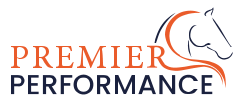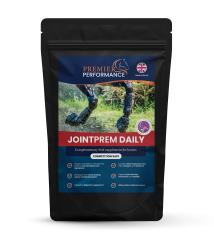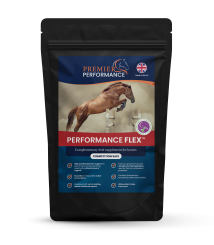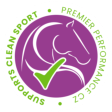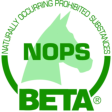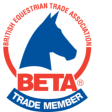in basket
TOP OFFER - SUMMER20 - 20% OFF and 4 FREE seasonal products!
Maintaining equine joint health
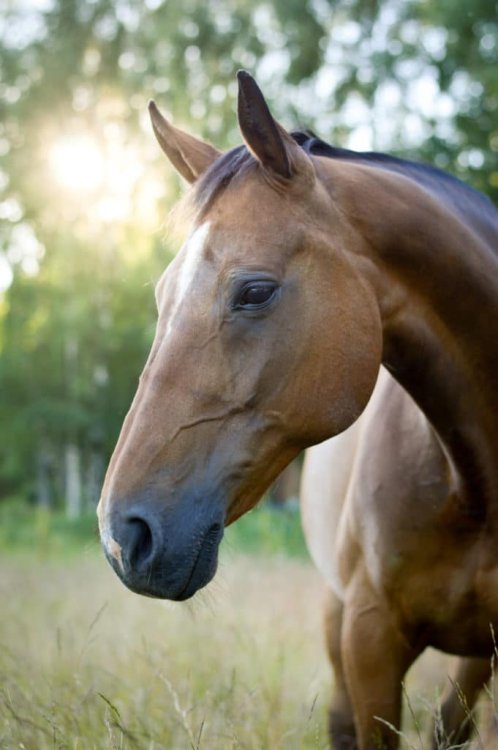
Musculoskeletal injuries are common in horses, and like humans, equine athletes are also prone to these types of injuries during training and competition. There are many factors that affect a horse’s risk of a musculoskeletal injury including fitness level, ridden surface, age, previous injury(s) and also nutrition. If you consider the natural environment of the horse, in the wild horses spend between 16 and 20 hours per day eating with the rest of their time spent grooming, playing and sleeping. Horses do not naturally spend regular periods of time galloping, jumping or engaging in extended periods of low intensity exercise; however, racehorses, eventers, showjumpers, endurance and dressage horses do. A horse’s joints need to act as shock absorbers during exercise and therefore supporting your horse’s joint health is essential.
Correct nutrition is vital for joint health; this begins with the diet a foal receives and continues through adulthood. Before we take a look at nutritional factors that affect joint health, it’s important to have an understanding of what makes for a healthy joint.
Your horse's healthy joints
Your horse’s joints comprise two bone ends covered by articular cartilage (provides cushioning to the joint) encased within a joint capsule (or sac). The inner layer of the sac, which is called the synovial lining, secretes synovial fluid that provides lubrication and prevents friction between the bones. The articular cartilage is made up of collagen, proteoglycans and water. Proteoglycans consist of chains of glycosaminoglycans, which are a type of carbohydrate attached to a protein to provide strength to the cartilage. Chondroitin sulphate is a glycosaminoglycan and is a key component of proteoglycans. Synovial fluid contains hyaluronic acid (also a glycosaminoglycan) and a protein called lubricin.
Feeding young, growing horses
The period of time after a foal has been born is the best time to potentially optimise your horse’s longer-term joint health. Growing horses are at risk of developmental orthopaedic diseases (DOD), which is a term used to describe a range of growth disorders in foals such as osteochondrosis (lesions in the cartilage and bone), angular limb deformities (deviation of the limb), physitis (growth plate inflammation), flexural deformities (also known as contracted tendons) and juvenile arthritis. There are many factors that predispose foals to DOD such as trauma, genetics, rapid growth rates and nutrition.
Diet is very important in joint cartilage development. Feeding excess energy (calories) leads to greater weight gain and growth, which can have a negative effect on skeletal development and especially if other nutritional requirements (such as protein) are not met. Feeding excess energy to young horses increases the risk of osteochondrosis, which is even greater when the energy is provided in the form of concentrates. Meal feeding concentrates to young horses results in post-meal elevated glucose and subsequent insulin levels, which is thought to impact on cartilage development. Feeding excess or low protein does not appear to increase the risk of DOD in horses.
The minerals, calcium and phosphorus are very important in joint health. Inadequate amounts of these or a poor ration of these (less that 1:1) can negatively impact on a young horse’s joints. Copper and zinc are also important in the development and repair of joints, with low dietary copper link with an increased risk of physitis in foals. Thus, to optimise joint health in young, growing horses it is important to provide adequate energy, protein and minerals to support a steady growth rate and avoid the development of DOD in foals and youngstock.
Feeding mature horses
Joints are challenged everyday in performance horses as part of normal wear and tear, which can lead to joint issues associated with inflammation and degradation of the articular cartilage and the development of degenerative joint disease or osteoarthritis. Osteoarthritis (degeneration and loss of articular cartilage) is one of the most common causes of lameness and poor performance in horses. Diet has a limited effect on joint health after one year of age; however, a poorly balance diet can contribute to the onset of joint issues in horses. Therefore, it is important to provide a balanced diet that meets your horse’s daily requirements and a joint supplement may help to reduce the onset of joint disease.
The importance of exercise in horses
As horses are nomadic animals, they are designed to roam over several kilometres per day and therefore they benefit from having access to turnout to be able to move around, which supports joint health. When exercising your horse, it’s important to take time to warm up and cool down. For example, it takes time for the synovial fluid to circulate, which is why walking for 10 to 15 minutes at the start of exercise is advocated. If you go straight into trot, then the synovial fluid does not have time to circulate within the joints and therefore there is more risk of damage. In the same way a runner would walk and stretch before beginning their run, horses need the same approach to warm up their muscles as well as their joints to ensure the tendons and joint surfaces glide smoothly. The only difference between the horse and the human is that the horse has no say in the type or duration of the warm up. However, similarly to humans, every horse is an individual and therefore their fitness level, previous activity, the work to be done in the session and their age all need to be taken into account. Walking for 10 to 15 mins can also help the rider warn up as well, doubling the benefit of this. Studies have also shown that it takes around 15 minutes for a horse’s back to warm up and therefore, it’s not just the joints that benefit from a good warm up period.
It’s equally important to consider how to cool your horse down after exercise. If you suddenly stop exercising with no cooling-down period then circulation slows down, trapping heat. Therefore, the aim is to restore your horse’s heart rate, respiration and temperature to normal resting levels post-exercise before standing him still. This can be done by keeping your horse walking to allow the blood circulation to continue to pull heat out of the horse’s core and dissipate it through the skin as sweat or via the respiratory tract. In summary, warm up and cooling-down are very important to prevent injuries either during or after exercise, as well as being of benefit to the actual training session itself.
Joint supplements for horses
The use of joint supplements to treat or prevent joint health issues has grown in popularity in recent years. There are many joint supplements to choose from containing a range of ingredients. Chondroitin sulphate is commonly included in joint supplements, this is a component of proteoglycans and there has been some debate over its bioavailability (the amount that enters the circulation) in horses. Studies in other species suggest that the majority of chondroitin sulphate is degraded in the large intestine and therefore this may be similar in horses.
Glucosamine forms part of the structure of the glycosaminoglycan chains found in proteoglycans and studies have shown this to be absorbed in the intestines. Glucosamine supplementation has been suggested as helpful in the synthesis of glycosaminoglycans. Combining chondroitin sulphate and glucosamine may have complementary effects on the maintenance of joints given that both are important substances in cartilage formation and there is some evidence to suggest that these are more effective when given in combination than alone.
Methyl sulphonyl methane (MSM) is an organic from of sulphur, which is generally present in horse feeds and can support collagen synthesis. Hyaluronic acid is a key component of synovial fluid and it is suggested that the addition of this to a supplement containing chondroitin sulphate and glucosamine may improve joint health in some horses. Omega-3 fatty acid supplementation has also been reported as beneficial in reducing joint inflammation. Linseed oil and cod liver oil are high in omega-3 fatty acids, whereas other vegetable oils are generally high in omega-6 fatty acids, which are pro-inflammatory. Therefore, supplementation with omega-3 fatty acids may also be beneficial in maintaining joint health.
We recommend the use of a high quality joint care supplement. Performance Flex is a horse supplement which helps maximise lubrication to the joints and contains important amino acids necessary for healthy joints and movement. This superb joint supplement is perfect both competitive and recreational horse health. Alternatively, for the competitive horse you could supplement with JointPlus concentrated daily joint care supplement which aids lubrication to the joints, supports soft tissue and contains important amino acids for collagen production necessary for healthy joints and movement. It contains a combination of natural superior vitamins, minerals, and herbs of the highest quality that provides the essential nutritional building blocks for the healthy horse.
Overall recommendations on joint support in horses
- Do not over supplement energy in young horse diets
- Ensure nutrient requirements are met and provide a balanced diet
- Ensure adequate calcium: phosphorus ratios
- Avoid overtraining
- Ensure your horse’s fitness level is appropriate for the level of competition/workload
- Consult your veterinarian for advice on joint issues
- Consider the use of a quality joint supplement
Article written for Premier Performance by Professor Jo-Anne Murray.
